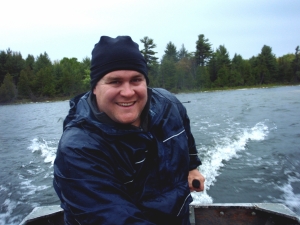

Please join us for two seminars.
"Determining the spatial linkages between hosts and parasites: Can we use fish to predict the condition of freshwater mussel communities?"
Daelyn Woolnough
Research Assistant Professor Biology
Central Michigan University
In order for freshwater mussels (Family: Unionidae) to survive, their distribution must spatially and temporally overlap with their hosts. Spatial patterns in unionid communities and their host fish were examined to determine the degree of biological connectivity among mussel beds that host fish provide. I considered the spatial patterns of host fish and non-host fish in three rivers in southwestern Ontario and the Upper Mississippi River. I will show how predictive surfaces can be used to determine 1) the connectivity between unionid communities and mussel community condition 2) target recovery areas and 3) pinpoint fish species to host test. I will highlight how recovery habitat can be chosen based on the host-parasite relationships of unionids.
"Patterns of post-glacial colonization for freshwater mussels in the Great Lakes"
 David T. Zanatta
David T. Zanatta
Assistant Professor of Biology
Central Michigan University
Declines in North American freshwater mussel populations have left 70% of species vulnerable to extinction. Continuous population declines over time have warranted the attention of conservation biologists; however, a good understanding of patterns in genetic population structure often inhibits conservation strategies and management. Two important hypothesized routes of entry for aquatic organisms into Laurentian Great Lakes at the end of the Wisconsin glaciation (~15,000 ybp) followed the paths of the Wabash-Maumee spillway (draining early Lake Erie) and the Chicago-Illinois River spillway (draining early Lake Michigan). Research in my lab tests these hypotheses and compares the post-glacial origin of freshwater mussel species (Unionidae) in the Great Lakes basin. To do this, we genotype microsatellite DNA markers to analyze genetic diversity from relatively common unionids in the Great Lakes and beyond and interpret the patterns of population structure. Understanding the postglacial origins and patterns of genetic population structure for unionids in the Great Lakes will help formulate evolutionarily sound guidelines and provide insight for augmenting and re-establishing populations of species of conservation concern.
Thursday, October 27, 2011
12:45–1:30 p.m.
Classroom Building B118
Students, staff, and faculty are welcome. Light refreshments will be served.
Some content on this page is saved in PDF format. To view these files, download Adobe Acrobat Reader free. If you are having trouble reading a document, request an accessible copy of the PDF or Word Document.
